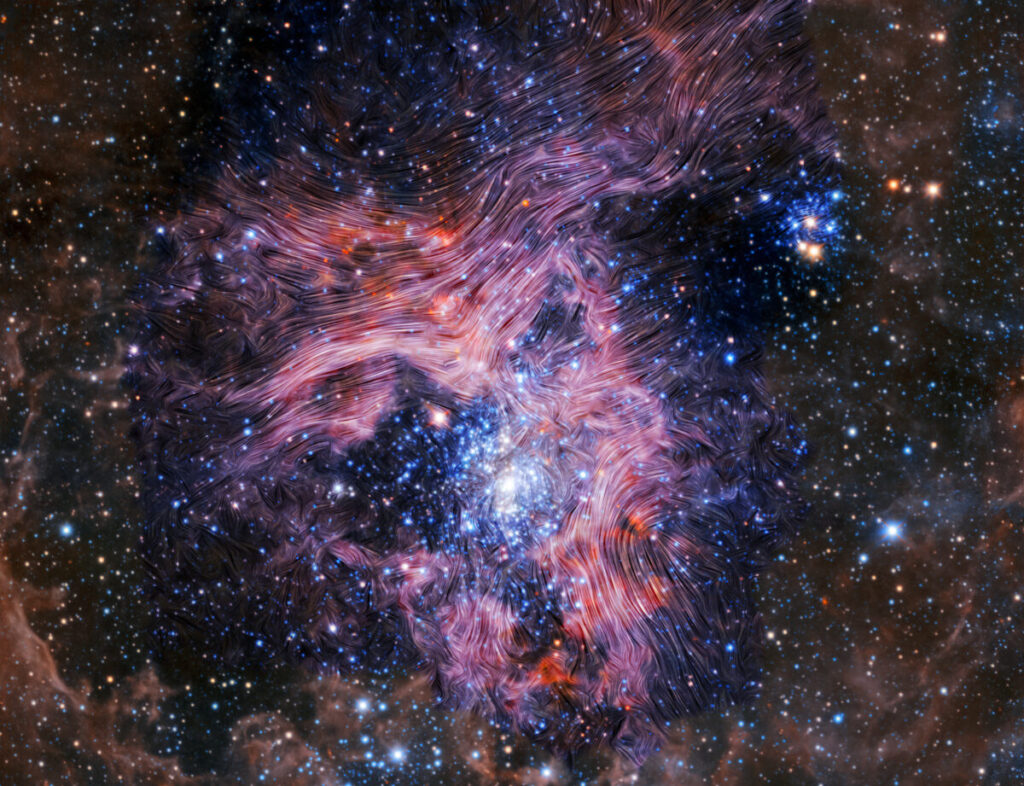
At the Stratospheric Observatory for Infrared Astronomy (SOFIA), Astronomers and researchers discovered the magnetic fields in 30 Doradus, which is a region of ionized hydrogen at the heard of the cloud, could be the key to it’s surprising behavior.
30 Doradus, also known as the Tarantula Nebula, derives most of its energy from the massive star cluster at its center called R136. This cluster is responsible for creating multiple expanding shells of matter within the nebula. However, within approximately 25 parsecs of R136, there are some intriguing phenomena occurring in this region of 30 Doradus.
A recent study, published in The Astrophysical Journal, utilized SOFIA’s High-resolution Airborne Wideband Camera Plus (HAWC+) to investigate the interplay between magnetic fields and gravity in 30 Doradus. Remarkably, magnetic fields emerged as the secret ingredient in this region.
The study revealed that the magnetic fields in 30 Doradus exhibit a fascinating combination of complexity and organization. Their geometry varies widely, influenced by the expansive structures at play within the nebula.
So, how do these complex yet organized magnetic fields contribute to the survival of 30 Doradus?
In most areas of the nebula, the magnetic fields display remarkable strength. Their resilience allows them to counter turbulence, regulating gas motion and maintaining the cloud’s structure. Moreover, their potency prevents gravity from overwhelming the cloud and causing it to collapse into stars.
Nonetheless, certain regions exhibit weaker magnetic fields, permitting gas to escape and inflating the giant shells within the nebula. As these shells accumulate mass, stars can continue to form, despite the presence of strong magnetic fields.
Further observations of this region, utilizing various instruments, will aid astronomers in comprehending the role of magnetic fields in the evolution of 30 Doradus and similar nebulae.
SOFIA, a collaborative project between NASA and the German Space Agency at DLR, played a crucial role in this study. The telescope provided by DLR, along with scheduled aircraft maintenance and other mission support, contributed to the success of the project. NASA’s Ames Research Center managed the SOFIA program, science, and mission operations in cooperation with the Universities Space Research Association and the German SOFIA Institute. The aircraft used for the mission was maintained and operated by NASA’s Armstrong Flight Research Center Building 703 in Palmdale, California. SOFIA achieved full operational capability in 2014 and concluded its final science flight on September 29, 2022.
Image Credit: Background: ESO, M.-R. Cioni/VISTA Magellanic Cloud survey.